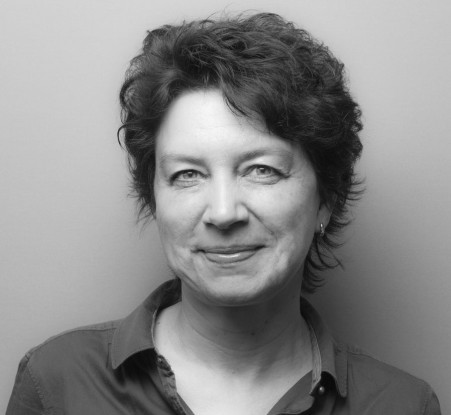Digital technology against forgetting
Thanks to sponsorship: Project for the reconstruction of synagogues in the Rhine-Main region starts at the TU
2023/02/15
Darmstadt, 15 February 2023. Since 1995, the Department of Digital Design at the Technical University has been virtually reconstructing synagogues that were destroyed during the Nazi era. The project is now to be continued with an in-depth look at the Rhine-Main region. Places of worship in Darmstadt, Mainz and Frankfurt are to be digitally restored. The aim is to show the cultural loss, the beauty of the synagogue architecture that once existed in Germany. In this way, the project contributes to the commemoration of the Shoah.

In 1933, more than 260 synagogues existed in the Rhine-Main region. The region was thus a centre of Jewish life in Germany and Frankfurt, with over 30,000 members, was the second largest Jewish community after Berlin at that time.
The synagogues in the three university towns of Darmstadt, Frankfurt and Mainz are the first focus of the Digital Design department's project, which is scheduled to run for several years. Other synagogues may follow at a later date.
The project also aims to promote interdisciplinary learning. In a planned collaboration between the Rhine-Main Universities (RMU) of Darmstadt, Frankfurt and Mainz, students from the Department of Architecture at the TU Darmstadt who are creating the reconstructions will work together with students from various other disciplines at the other two universities.
The project in Frankfurt is being funded by the STIFTUNG GIERSCH, and the city is also seeking to participate. In Mainz and Darmstadt, the respective mayors support the project, and for Darmstadt, in addition to the Sparkasse Darmstadt, the ENTEGA Foundation, the Jakob Wilhelm Mengler Foundation and the Dotter Foundation are also participating. Last but not least, the TU Darmstadt itself is funding the project to the tune of one third. The impetus to expand the project also came from TU Chancellor Manfred Efinger.
The planned reconstructions and the updating of existing visualisations initially include 13 synagogues. For Frankfurt, in addition to the three large inner-city synagogues, these are the places of worship in the districts of Bockenheim, Höchst, Rödelheim and the synagogue in the Israelite Hospital in Rechneigrabenstraße. In the case of the Westend synagogue in Freiherr-vom-Stein-Straße, which was not destroyed externally, the original condition of the interior is to be reconstructed. The Darmstadt synagogues sub-project focuses on the two large synagogues in Bleichstraße and Friedrichstraße as well as the synagogue in the Eberstadt district, which was also destroyed. In Mainz, the synagogues in Hindenburgstraße and Magarethengasse/Flachsmarktstraße are to be reconstructed.
The project appeals to a broad public. In the past, the reconstructions of the TU Darmstadt have already achieved great national and international renown. At the same time, the project offers students the opportunity to learn digital skills in socially relevant subject areas. The project also sees itself as a contribution against anti-Semitism. It aims to make Jewish life visible and will integrate these topics into university teaching and give young people a chance to actively participate in the culture of remembrance with the digital tools of the 21st century.
Dr.-Ing. Marc Grellert, Head of the Virtual Reconstruction Research Unit at the Department of Digital Design and initiator of the project, explains: “The intention and hope of the project is to appeal to young people in particular and to illustrate the cultural flourishing of Jewish communities. The reconstructions inevitably lead to the question of why these buildings and their communities no longer exist. The digital images and virtual reality applications represent a contemporary approach to political remembrance work and should also contribute to breaking down barriers to learning about Jewish culture – the usually unknown space of a synagogue can be explored in this way.”
Tanja Brühl, President of TU Darmstadt, also sees the project as an important contribution by the university: “With the virtual reconstruction of destroyed synagogues in the Rhine-Main region, we have the opportunity to make an important contribution to the cultural heritage of the three RMU university cities. The project is an example of how interdisciplinarity and cooperation in research and teaching can succeed within RMU and how we, as universities, can actively shape the culture of remembrance in exchange with civil society and stand up for the appreciation of diversity. I would like to thank all the sponsors for their generous commitment and look forward to the further progress of the project.”
The first results of the project are already available. On 16 February, Darmstadt's Lord Mayor Jochen Partsch will open the installation “Telescope into the Past”. It commemorates the destroyed synagogue in Bleichstraße with a 3D image. The reconstruction shown, which was sponsored by the ENTEGA Foundation, is a revision of an earlier version and shows what is possible with current software. Externally, the installation resembles a telescope. Looking through it, you can see what it would look like if the synagogue were still standing. The installation, which has already been realised in other places, was created in Darmstadt as part of the project “Pupils against Forgetting for Democracy – Steles Project and App Digital Tracing. Footprints4Freedom” project of the Lichtenberg School in Darmstadt.
On 9 November 1938, National Socialists set fire to the synagogue. The synagogues in Friedrichstraße and Darmstadt-Eberstadt were also destroyed. Synagogues burned all over the German Reich in November 1938 – in more than 1,000 places the Nazis organised the destruction of Jewish houses of worship. The Darmstadt Synagogue Project has been setting a sign of remembrance in this regard for almost 30 years.


